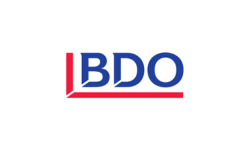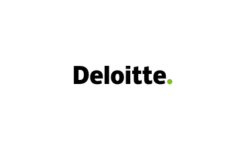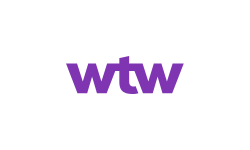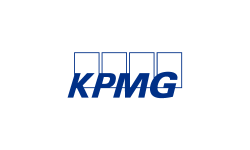Governance: the key to unlocking ESG

Claude Brown is a Partner at Reed Smith. He is part of the firm’s global ESG practice. https://www.reedsmith.com/en
Claude Brown argues that governance is the most critical aspect to ESG as a whole and organisations would cease to function without it.
ESG considerations and its impacts on businesses world-wide have been well-documented in recent years, and will likely remain in the spotlight for years to come – a Thomson Reuters report this year revealed that, for the third year in a row, more large global companies were disclosing ESG matters than in previous years; the latest figure standing at 95%.
But do all three aspects of ESG receive equal consideration in the workplace? It cannot be denied that the environmental strand has remained front and centre thus far, understandably so given the importance of addressing climate change and preserving our planet. The social aspect comes next in terms of making a tangible difference to people and communities we live in, leaving governance trailing behind. But this risks undermining the importance of 'governance' as a strand of ESG – it is arguably the most critical aspect to ESG as a whole and organisations would cease to function without it.
What is governance?
Governance is about more than just how an organisation runs itself internally – taking this view vastly limits the scope of what governance hopes to achieve and overlooks a variety of wide-ranging issues that can impact a company. This includes important company-wide policies addressing critical issues ensuring fairness and happiness in the workplace; addressing employment issues to do with racism, sexism, mental health and well-being, alongside more typical considerations like health and safety, rates of progression, whistleblowing, and complaints procedures. These good practices ensure that an organisation can function effectively and reflect management’s willingness to take responsibility for treating employees with respect and fairness.
However, it is no longer enough that organisations address the aforementioned issues alone to ensure the workplace is a happy and healthy one – they must also have governance strategies in place to deal with ESG considerations. Today’s workforce is keen not only to ensure that their needs, professionally and personally, are met but also to try and do work that is meaningful to the communities – and the world – they live in. Hence, it is no surprise that ESG has risen to the top of the corporate agenda as this shift has gripped the workplace.
The question of accountability
The simple answer is that it should be the board that is responsible for implementing and regulating how organisations interact with ESG obligations, lest we risk them falling to the bottom of the agenda when left with a person out of the board’s immediate oversight: more often than not, organisations will assign the general counsel, allocated sustainability officer, or anyone other than the board themselves. While the general sentiment may be that the board has better things to do with their time, this is a massive oversight that means ESG soon becomes just another thing to be reported on at a board meeting, making it clear to stakeholders that ESG considerations are not important enough to be front and centre for the board. Ultimately, ESG should not be on any list at all; rather informing every aspect of discussions that go on at board meetings and even in the wider workplace, making its mark on every decision the board makes.
Thus, the need for a comprehensive and integrated ESG policy is essential in the age we live in; this can only be achieved with the supervision and broad view that comes from the board or an equivalent body in the organisation’s hierarchy. This is also vital in ensuring that balance exists within and between each strand of ESG – if ideas and action all come from the bottom- up, it is easy for one component to receive more attention than the others with no one to really keep this in check.
Top-down vs bottom-up
Proponents of the bottom-up approach to governance, rather than the aforementioned top-down strategy, believe that ESG strategies are most effective when they come from managers and employees lower down in the company hierarchy; utilising their engagement and willingness to do good in an effort to prove themselves to the organisation. However, the risk here lies in that without a top-down approach providing structure to their actions, any actions – however well intended – may possibly have an adverse outwards ripple effect on other aspects of ESG.
For example, a commitment to environmental concerns is commendable, but doing this at the expense of creating unforeseen social consequences is less commendable. This can be easily prevented with the benefit of oversight from a supervisory figure or figures, ideally the board, who can set governance policies in place designed to avoid this happening.
The top-down approach has other benefits too – by establishing that ESG is a priority for those at the highest levels of leadership, it sets a good example for others at the company. This also shows stakeholders that ESG obligations are not just handed down as a matter of less importance, but rather that they should take centre stage along with other important issues for the board’s consideration.
The grand scheme of things
Despite the importance of establishing solid internal foundations to support ESG from within an organisation, this will not always be the case – ESG initiatives, and thereby governance, are still influenced by external factors. One such example comes from stakeholders becoming increasingly involved as a result of the rising importance of ESG on the corporate and public agenda.
You cannot choose your stakeholders – while some will spring to mind instantly, like shareholders, customers, suppliers and service providers, some are trickier to identify; such as single- issue activists, pressure groups, lobbyists and to an extent, the public. It is clear that organisations do not get to define its ESG stakeholders; more often than not they define themselves, especially when it comes to newer, amorphous groups. As the focus on ESG ripples up and down the supply chain, the more stakeholders can change, adding new stakeholders from the organisation’s suppliers and customers alike to its existing groups.
This is why an external-facing ESG policy is needed, though not necessarily one that is different from an organisation’s internal policies, as doing that will only result in accusations of hypocrisy and double-standards. Any policies implemented, external and internal, must be held to a consistent standard and fully integrated into the running of the organisation.
Another vital role governance plays in ESG is in ensuring that ESG strategies extend into the long term rather than just the short to medium term – this is critical in avoiding any instances of one strand’s aims interfering with another strand’s, creating unforeseen and unwanted consequences. This requires strategies to be implemented and put in place by bodies with the requisite amount of authority to do so.
Measuring and assessing the effectiveness of governance strategies is also important – which is why a strategy for governance must be relatively constant to allow for all stakeholders to do so, though there is a balance that must be struck between this and one that is flexible enough to adapt to the ever-changing ESG agenda.
Hallmarks of good governance
Ultimately, implementation and engagement of ESG strategies from the top-down is the most significant indicator of good governance, and is something to look out for by investors looking to gauge an organisation’s approach to ESG. They should also ensure that the strategy balances equally the environmental, societal and governance strands of ESG and ensure that no unintended consequences occur from one initiative interfering with another. Internal and external policies towards governance should be addressed, and the two should be consistent. Strategies must also be designed to be responsive to changes – both in the rapidly evolving community of stakeholders, as well as in constantly evolving ESG agenda.
If you've enjoyed this content, subscribe today for
3 months free of our exclusive governance insights.
Register to receive our FREE Interim newsletter which alerts you to the latest information about the fast-developing world of corporate governance.








